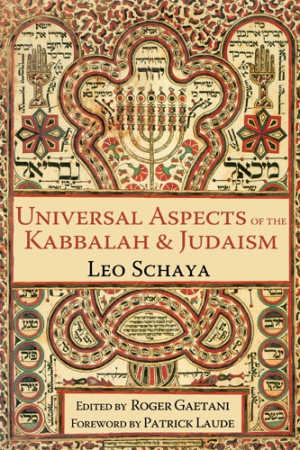Universal Aspects of the Kabbalah and Judaism
- 2014 INDIES Finalist
- Finalist, Religion (Adult Nonfiction)
Jewish mysticism is shown to have much in common with counterparts in Islam, perhaps opening roads to dialogue.
A new collection presents the translated work of Leo Schaya, a leader in scholarship on Kabbalah and mysticism whose work often focuses on eternal interreligious commonalities. In Universal Aspects of the Kabbalah and Judaism, editor Roger Gaetani synthesizes a vast body of work into an illuminating and engaging volume.
Both Gaetani and Patrick Laude, the author of the foreword, share Schaya’s scholarly background in Islamic mysticism. Readers thus find that the universality suggested in the title relates to the continuity that Schaya notes between Judaism and the rest of the world’s traditions, and with Islam in particular.
Schaya’s work makes frequent reference to the Sophia perennis, which functions as a bridge between traditions: “wisdom … comes down to us through the millennia, through various and complementary expressions … humanity always has this common spiritual language, despite differences of idiom or formal concept.” He roots this common language in Semitic traditions, in Judaism particularly, never relinquishing the notion of one divine source of truth.
Essays trade between mystical concepts central to both the Kabbalah and the Sophia perennis. One seeks common ties between Judaism and Eastern traditions, while others focus on theophany at Sinai, the significance of Elijah, and a Jerusalem temple embracing the needs of mankind.
Judaic concepts are fleshed out lovingly and brought to bear across the human landscape, though Schaya also presents them as one part of a grand and continually unfolding story. Such presentations often take for granted working backgrounds in Judaism, and to some extent Islam, and the elegance of this work will often be best appreciated by those in the academic know.
Gaetani warns that Schaya’s readership has been wont to complain that his work is too challenging, but readers would be remiss to balk at the passages that require concentration. Where Schaya veers into mystical explication—of the meaning of the Tetragrammaton, the manifestations of the sefirot, or the numerical significance of the Arabic construction of “Allah”—his work does become dense, but the artistry of his arguments still warrants admiration. Readers may comfort themselves with later reminders that mysticism isn’t open to all, anyhow, but “only to those who [enjoy] an extremely heightened state of inward preparedness.”
These essays are ably directed by their editor, and the theme of interreligious connection dominates the most accessible portions of Schaya’s writing. Readers may thrill over poetic passages, which argue that “God is hidden in everything He creates, somewhat in the way light is contained in the innumerable reflections [of] a mirage,” and through them will always return to notions of connectedness. A final chapter reemphasizes the notion that the path was paved by Judaism, and that Islamic mysticism brought humanity full-circle, offering footing on it to all mankind. Such arguments for inherent commonality may open roads for much needed dialogue between the traditions.
This book is a thoughtful compilation through which readers may be glad to meet an underappreciated giant in monotheistic mysticism.
Reviewed by
Michelle Anne Schingler
Disclosure: This article is not an endorsement, but a review. The publisher of this book provided free copies of the book and paid a small fee to have their book reviewed by a professional reviewer. Foreword Reviews and Clarion Reviews make no guarantee that the publisher will receive a positive review. Foreword Magazine, Inc. is disclosing this in accordance with the Federal Trade Commission’s 16 CFR, Part 255.

